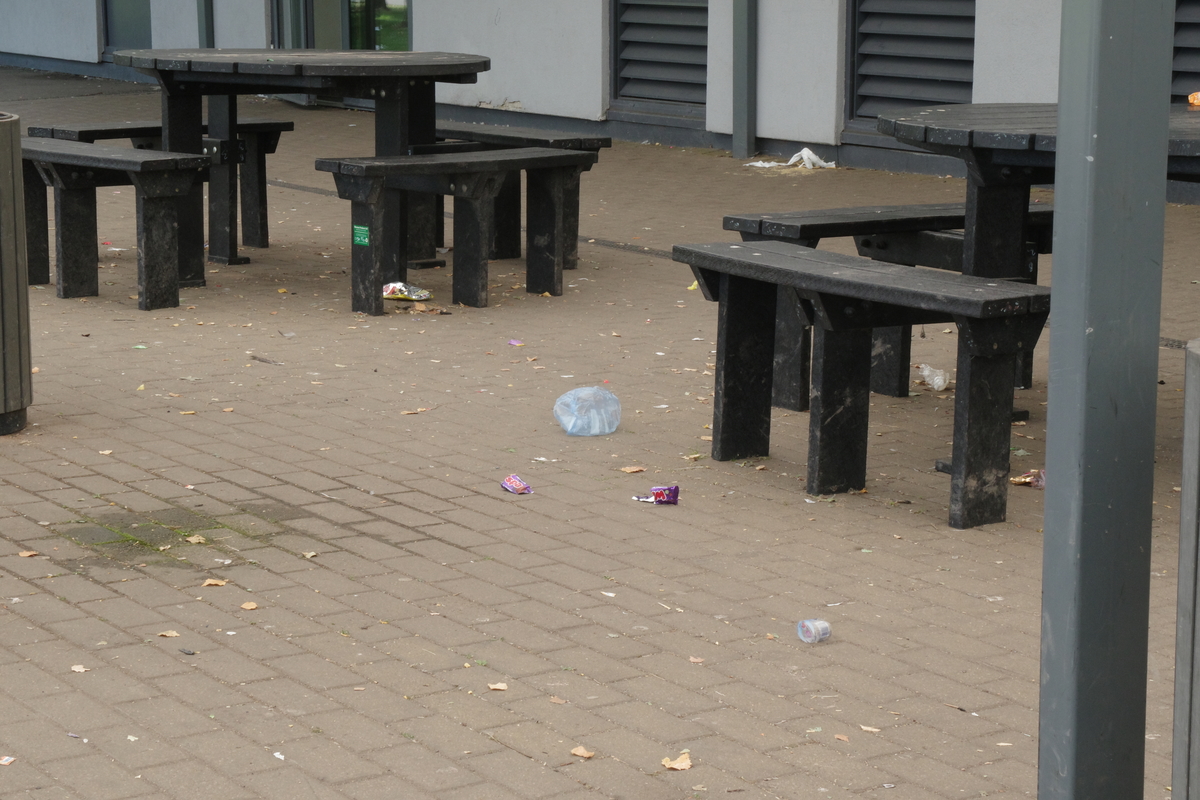What is Culture?
Here are some resources following my presentation on 24th September 2024
A printer friendly version can be downloaded here
Here's a link to the video of my presentation
One point that I didn't get to was indicators of culture. I said that to change it we need to be able to measure it, and if we can't even define it then we've got no chance of measuring it. I also said that measuring a sunflower doesn't make it grow, but what it does do is provide valuable feedback to let us know if we're doing the right things.
In 2022 I visited a large secondary school that had a long list of problems, One thing that was immediately visible was the amount of litter. It was everywhere, inside and out, and it was causing other problems such as attracting scavengers. You might say that litter is the least of the school's problems when there are far more pressing areas of need such as results, attendance, behaviour and so on. Focus on the big problems, right?
Well, that depends on what the litter means.
Litter is visible, therefore it is a form of communication. To really understand the message, we have to look at the evolution of the underlying pattern. The first question to ask is; is the litter dropped or placed?

Silly question, right? Litter is always dropped. That's what people do.
No. Litter is placed, intentionally, carefully and strategically, if it is a form of communication.
So let's consider two possibilities. Firstly, students drop litter because they don't care about their environment. They think that no-one else looks after the place, why should they? No-one challenges them so why should they walk 2 or 3 metres to the bin? Secondly, they drop litter in order to claim their environment. They seek belonging as we all do. They are dropping litter to claim their space. It might be a mess but it's theirs.
How would you know which of these possibilities is correct?
Simply, you measure over time. If litter results from not caring or being 'lazy' then litter will remain consistent over time, because there is no rule driving that behaviour. If litter gets worse over time and escalates into graffiti and vandalism then it's more likely that there is an underlying rule which is driving the trajectory of change. It's more likely to be a sign of the claiming of ownership driven by a need for belonging.

I visited the same school very recently. There was no litter. Walking around the school I saw none. An absolutely revolutionary transformation. Well, almost. There was one slice of pizza sitting on a high windowsill. Every piece of litter, every poster, every book, every discarded shoe tells a story because it didn't get there by itself. How did the pizza get there? Logically it must have been thrown, so what does it tell us? Is it a complaint, a bit of fun or a sign of bullying? Based on one slice of pizza, we can't tell, but it's a flag, a warning sign, a clue which might form part of a bigger puzzle, or might not. If staff ignore it, that puzzle might get bigger and bigger before anyone notices. Or it might not. We can't predict a pattern based on one data point, but we can at least choose to not ignore those data points, which in turn accelerates change because we are tightening the gap between tacit and explicit rules - we are choosing to act with integrity.
Research in 2013 from the Miller Heiman Research Institute found that companies that measured customer-focused behaviours had an average increase in profitability of 13% compared with other companies. This performance gap increased to 25% when combined with measurements of best practices in selling and sales management. Simply, if you measure a sunflower you don't change it. If you measure a person, you do change them, or at least influence them. There's a story in Dale Carnegie's famous book 'How to Win Friends and Influence People' about the use of simple measures to motivate teams - an approach that today would probably be called 'gamification'. In any case, when you measure something, and you make that measure public, you are communicating its importance and you are giving recognition. It's a simple truism of management that people will tend to do more of what you give them recognition for, because recognition is the simplest social signal of belonging.
Here's that Head Teacher's office wall that I mentioned:

Of course, you're going to ask a hundred questions about this; if it works, what the data means, how the HT uses the data, does it actually change anything and so on. I don't know, I'm merely demonstrating the way that one HT is using an office wall to communicate, to set intention, to set aspiration and so on. I'm sure this is backed up in SLT conversations, parent conversations and so on. That alignment of cultural rules throughout an organisation is another example of the integrity which will lead to change. Change for the better? Who knows, you'll have to wait and see!
I also wanted to expand on a very interesting question around rules. The word 'rule' might suggest power and authority, but you can equally use words such as 'paradigm', 'decision', 'principle' or 'expectation'. The word is used here in the way that you might use it in maths or computer programming. Rules determine every decision you make and therefore every behaviour. People do not behave randomly and they do not act for 'no reason'. When we observe a person's behaviour and responses to external stimuli, we can determine the rules that drive their actions and we can then pass those rules onto others - that's how we can repoduce high performance in an organisation.
The question was about the difference between a very clear, simple rule such as, "No smoking or vaping anywhere on site" and a more complex, intangible rule such as, "Respect to all, from all". There is really no difference between the two, let me explain how and why.
How do you know someone is vaping on site? Well, you know what vaping looks like and you know what the site boundaries look like. Simple. How do you know that someone is showing respect? It might sound more complex but here's the key - you must have a way of knowing otherwise you wouldn't be able to intervene when someone isn't showing respect.
What we did at CRST was to take that simple expectation of respect and think through a number of scenarios to break it down into recognisable, communicable behaviours. Let's say you walk through a door and someone is just behind you. Do you let the door slam in their face, or do you hold it for them? If so, do they ignore you or say thank you? Are these transactions signs of respect? If they are then they are rules. If you don't tell someone that this is a rule until they break it then it's a tacit rule. If you give them a fair chance by telling them first, it's an explicit rule. That's all there is to it. To implement this, we didn't list every single acceptable behaviour, we defined the overall principles and then gave examples of those principles being followed or not. Greeting a visitor, holding a door, keeping place in a queue, all of these are signs of respect. Of course, a student could argue that these are not signs of respect but that would be irrelevant because they are not making the rules. They are following your rules, or they are going somewhere else and following rules which are more to their taste.
Let's return to the original question. A clear rule about vaping seems easy to implement. What if you catch someone vaping and they say that they are not on site, they are 1cm over the boundary? What if they say they are not vaping, they're just holding it? You're now stuck in a position of arguing over interpretations and trying to prove yourself right, which is exactly what you were trying to avoid by writing such a simply worded rule. If, instead, you think about the principle, the reason why you don't want vaping or smoking on site, then that behaviour becomes just one example of the broader principle rather than an end in itself. Some years ago you could have had a no smoking policy which you then had to update to include vaping. Who knows what will come next? It is therefore more useful to think about the principle that you are implementing in your culture because that gives you more flexibility than trying to legislate for everything that someone may or may not do.
